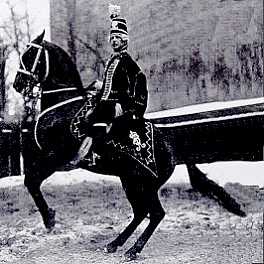Rhythm – You’ve Gotta Have It!
How to discover your rhythm and keep up with your horse
 We all have heard riding instructors say to ‘get out of our horse’s way’. This can mean many things, from soft hands to quite legs and especially an independent seat that moves fluidly with horse’s movement without disturbing – well, the horse’s rhythm.
We all have heard riding instructors say to ‘get out of our horse’s way’. This can mean many things, from soft hands to quite legs and especially an independent seat that moves fluidly with horse’s movement without disturbing – well, the horse’s rhythm.
What is Rhythm?
Rhythm is the regularity of the footfall. Easy as that.
- a strong, regular, repeated pattern of movement or sound.
THE PROBLEM WITH YOUR HORSE’S RHYTHM
Throughout much of our day – whether gardening, tidying up or grooming a horse – we human spend with some pushing or pulling motion, engaging arms and shoulders. In addition, human nature is that we tend to want to do too much….with our hands, our arms, our shoulders. Humans are bipeds and have no real need for rhythm unless we jog or run. We can spend days, weeks and months without rhythm and “never miss a beat”, happily stiffening our body into whatever works for our daily work environment (think cubicle) and paddling, pushing, pulling our way through life. This rigidness prevents us from moving freely with the rhythm of the horse.
Humans are bipeds and have no real need for rhythm unless we jog or run. We can spend days, weeks and months without it and “never miss a beat”…
Our horses, however, are quadrupeds built for speed and stamina and for moving over vast stretches of steppe. Rhythm is their default mode.
When training the young horse, our aim is to
- not to disturb their natural rhythm and
- let the horse grow into a natural movement under the weight of the rider, which – again – means relaxed, rhythmic, balanced movement.
Read about the 4 horse gaits – Museum of Natural History
Watch a horse in all three gaits on the tread mill – Vet University Zurich
THE SOLUTION TO DEVELOPING OUR HORSE’S RHYTHM
We need to (focus on our own rhythm and…)
- find, cultivate and become friends with our own rhythm,
- become open to noticing rhythm in daily activities,
- move the rhythm when not mounted and
- translate this new-found jazz leg to our riding activity.
For that, we need to be relaxed, supple and strong enough. Just like our horses…
PATH TO PERFORMANCE™ Clinic on RHYTHM with Stefanie Reinhold – Host at Your Barn! Contact us
BUT I CAN’T DANCE
 If you feel your are getting in your horse’s way while riding, having a hard time following the strides in a relaxed fashion, you may have a rhythm problem.
If you feel your are getting in your horse’s way while riding, having a hard time following the strides in a relaxed fashion, you may have a rhythm problem.
If you find yourself struggling with clapping or tapping along, hitting a note, dancing a square or simply having a concept of rhythm, you are not alone.
Here some easy starters to get the feel:
- Take a walk, walk briskly and pay attention to the sound of your feet on the pavement. Make up a tune and sing along (aloud or in your head) to the beat of your feet. Smile.
- Dig up the metronome or get a metronome app. Clap along or find the beat for your favorite tunes. It’s about making that body/brain connection…
- Ride at the walk and recite a poem, trying to match the beat of your horse’s feet. (Remember, what others think about you is none of your business…)
Link to best free metronome apps
Become a rhythm pro by watching this very nice video
RIDE TO MUSIC
Once you are hooked on rhythm – and you will be – enjoy every minute in the saddle as an exercise in rhythm awareness. If you horse is relaxed, supple, sound and strong enough and you have not ‘taken the forward’ out of him, he will move happily in a steady beat. That is an indicator that a lot in your riding and training is going well.
Link to the article “How to Ride to Music – find Your Horse’s Beat”.
LAST NOT LEAST
Rhythm is not tempo, and tempo is not speed.
First, focus on the Rhythm by making sure you and your horse are relaxed, supple, and strong enough. A steady rhythm (or regularity of beat) is an indicator for good training, meaning your horse is relaxed and supple.
After that, we’ll take a look at Tempo (what’s your horse’s natural tempo, how many BPM – beats per minute – in each gait?) and Speed (how much ground does my horse cover in any given time increment).
Stay tuned for a follow-up article explaining the difference between rhythm, tempo and speed. It’s always good to revisit these basics.
As always – Enjoy Your Horse!

Stefanie Reinhold


